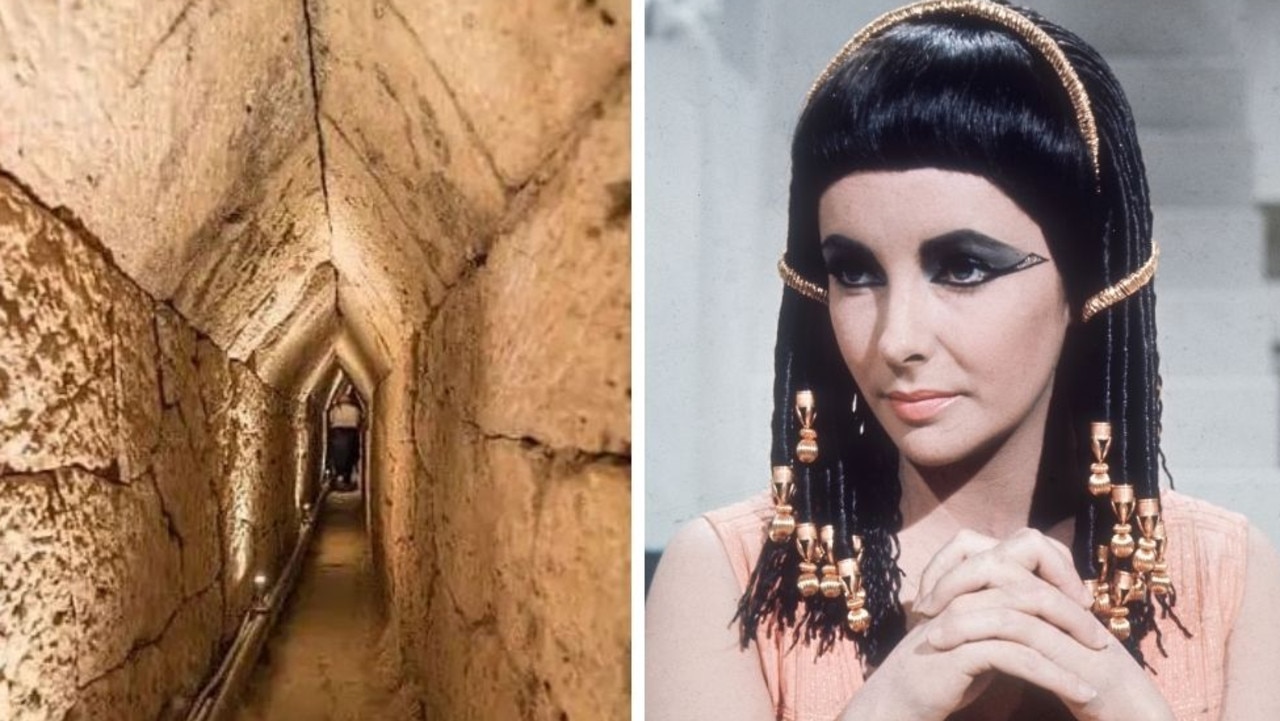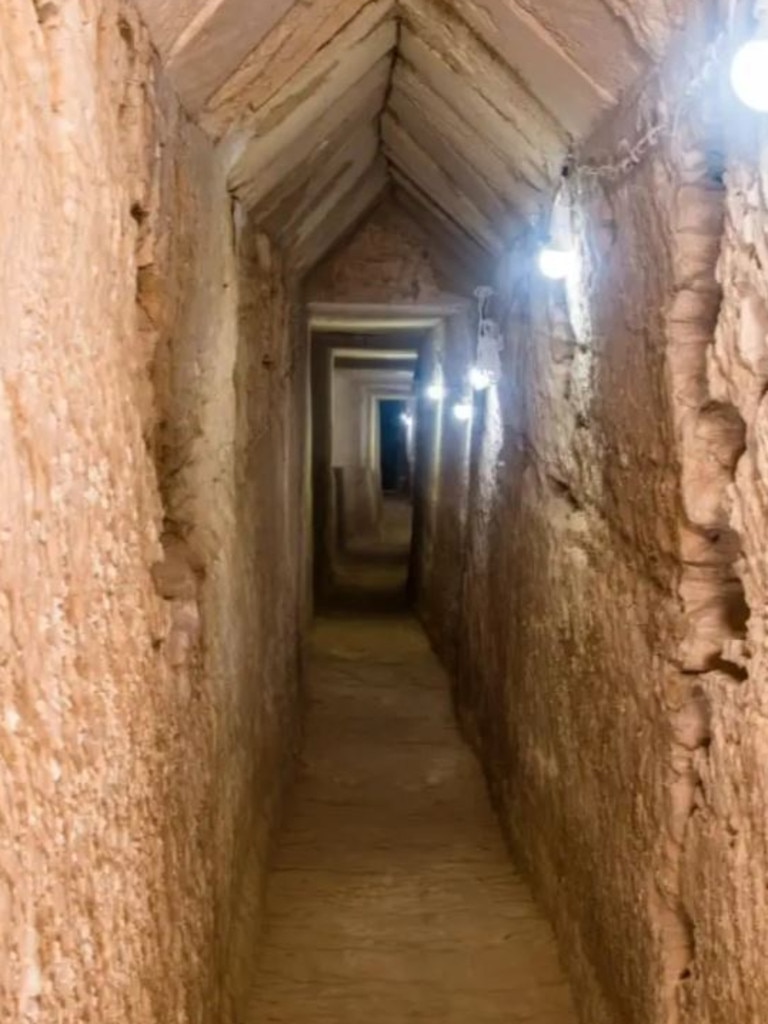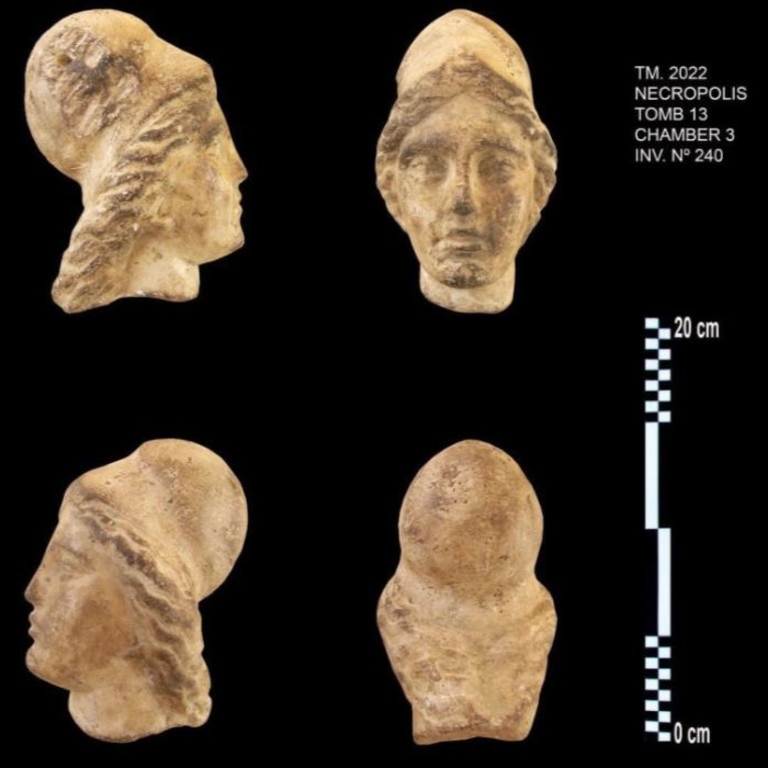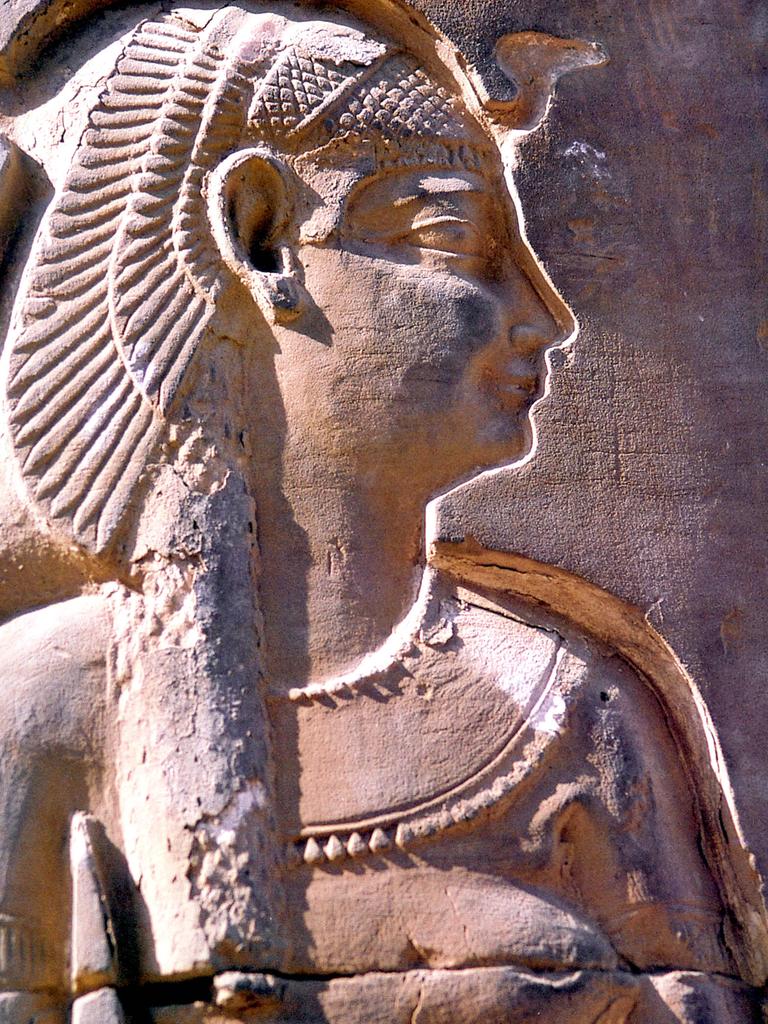Egypt’s last pharaoh Cleopatra VII may lie in tunnel beneath temple
The final resting place of Ancient Egypt’s last queen Cleopatra is one of antiquity’s great unsolved mysteries, but a long tunnel found far below a temple could be a crucial clue to her tomb

READING LEVEL: GREEN
A mysterious tunnel discovered beneath an Egyptian temple could lead to the long-lost tomb of Cleopatra*.
The 1500m passage – which is about 1.8m high and contains two stone heads – was unearthed by a group of archaeologists* who hailed the find as a “geometric miracle”.
The discovery was a part of the Egyptian Dominican archaeological mission of the University of San Domingo, led by Dr Kathleen Martinez.

Last week, the Egyptian Ministry of Tourism and Antiquities* announced the successful mission, revealing that Dr Martinez and her team uncovered the tunnel.
It was found below the ground “during archaeological excavations* of the mission in the area of the Temple of Tapozeries Magna”, west of Alexandria.
Dr Martinez has believed for years that Cleopatra, Egypt’s final pharaoh*, could have been laid to rest in the temple.

“This is the perfect place for the tomb of Cleopatra,” Dr Martinez said.
“If there’s a 1 per cent chance that the last queen of Egypt could be buried there, it is my duty to search for her.
“If we discover the tomb … it will be the most important discovery of the 21st century.
“If we do not discover the tomb … we made major discoveries here, inside the temple and outside the temple.”
Cleopatra VII was born in 70 or 69BC and ruled Egypt as coregent* for almost 30 years.
Following her death, Egypt was annexed* by its Roman rulers, effectively ending the 3000-year-old Ancient Egyptian Empire.

Pharaohs often built huge tombs to be buried in, but given her status as a prisoner of Rome at the time of her death, it’s likely Cleopatra was given a quiet burial in an austere* tomb.
As the last queen of Egypt, Cleopatra is one of history’s most famous female rulers, but her final resting place remains an unsolved mystery.
Some experts believe the beautiful pharaoh was buried in Alexandria, where she was born and ruled for most of her life.
Others suggest she was laid to rest at the ancient site of Taposiris Magna.

Sitting 50km from Alexandria, the temple’s surrounding city of the same name was a prominent port town during Cleopatra’s time.
Citing preliminary studies, the Egyptian Ministry of Tourism and Antiquities claimed the tunnel was eerily* similar to the Eubilinos Tunnel in Greece – which served as an aqueduct* – however, the Egyptian one was longer.
Dr Martinez told LiveScience.com that coins and the remains of statues of Egyptian deities* were also found in the tunnel.
In their excavations and surveys, the archaeologists discovered part of the tunnel was “submerged* under the Mediterranean,” according to the ministry.

They found pottery and a “rectangular block of limestone” under the mud sediment*.
The archaeologists’ work on the temple has been difficult – at least 23 earthquakes hit the region between 320AD and 1303AD, causing part of the site to collapse.
However, the team had previously uncovered other important artefacts* inside the temple, including coins featuring the names and images of Cleopatra VII and Alexander the Great*.
They had also found several headless statues and statues of the goddess Isis, the ministry said.
Excavations and surveys of the temple continue, according to LiveScience.com.
This story was originally published by The Sun and reproduced with permission
GLOSSARY
- Cleopatra: Cleopatra VII was the last of a series of rulers called the Ptolemies who ruled ancient Egypt for nearly 300 years (
- archaeologists: scientists who study buildings, graves, tools and other objects of the past
- geometric: using straight or curved lines in designs or outlines
- antiquities: remains or relics like statues, buildings, and coins from ancient times
- excavations: removing earth very old buried objects to discover things about the past
- pharaoh: Ancient Egyptian kings and queens and the religious leaders of their people
- coregent: joint ruler
- annexed: taking possession of an area or a country, usually by force or without permission
- austere: severe, without warmth or welcome, forbidding
- eerily: strangely, mysteriously, spookily
- aqueduct: structure for carrying water across land, especially a high bridge with many arches
- deities: gods and goddesses of religions and mythologies
- submerged: below the surface of water, underwater, immersed
- sediment: matter or material that settles at the bottom of a liquid
- artefacts: man-made objects likes tools and decorations, especially of historical interest
- Alexander the Great: king of the Ancient Greek kingdom of Macedonia (356 BCE to 323 BCE or Before Common Era)
- Isis: called Aset by Ancient Egyptians, queen of the throne, goddess of healing and magic
EXTRA READING
Ancient Egyptian shipwreck found in the Mediterranean Sea
Ancient Egyptian coffins sealed for 2500 years
Scientists recreate Cleopatras perfume
QUICK QUIZ
- How long and how high is the passage?
- When was Cleopatra born?
- How long did she rule as coregent?
- What happened upon her death?
- How many earthquakes across what period caused part of the site to collapse?
LISTEN TO THIS STORY
CLASSROOM ACTIVITIES
1. Waste of time?
If Dr Martinez learns that she has not discovered the tomb of Cleopatra, do you think that she has wasted her time? Write a paragraph with lots of detailed reasons why or why not.
Time: allow 20 minutes to complete this activity
Curriculum Links: English; History
2. Extension
Do you know how archaeologists work out how old found objects are? Brainstorm ideas and also use your research skills to find out how an archaeologist could learn the age of these items: a coin, a piece of pottery, a tree stump.
Time: allow 60 minutes to complete this activity
Curriculum Links: English; Science; History
VCOP ACTIVITY
Stretch your sentence
Find a “who” in the cartoon – a person or an animal. Write it down.
Add three adjectives to describe them better.
Now add a verb to your list. What are they doing?
Add an adverb about how they are doing the action.
Using all the words listed, create one descriptive sentence.

